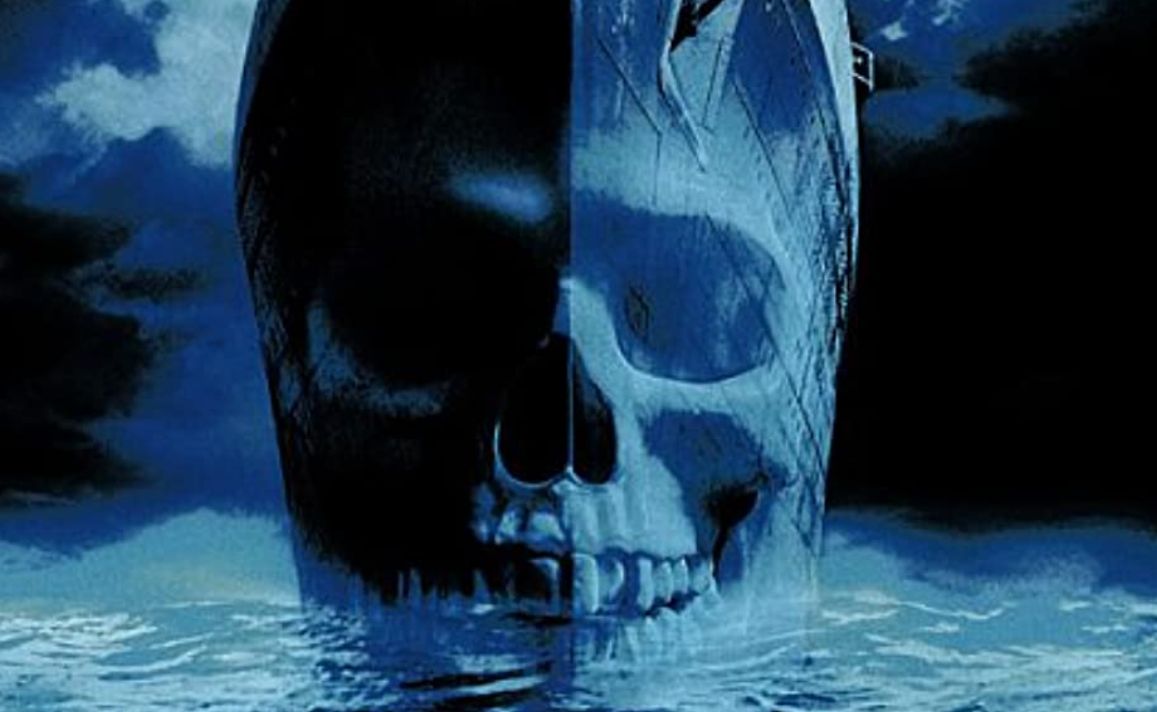Two questions come to mind when discussing Steve Beck’s 2002 horror film Ghost Ship. Did we really like Ghost Ship? And if so, why?
I promise I’m not being disingenuous. Much like Beck’s previous horror film Thir13en Ghosts, Ghost Ship is somehow both memorable and missable.
It has no begoggled Matthew Lillard channeling Vincent Price via Stu Macher, nor does it have the fantastic ghost design of Thir13en Ghosts, but what it does have is a very strong opening sequence.
It begins with cheeky old-school opening credits, replete with dreamy pink lettering and a Love Boat-style musical score that leads us into the cozy confines of a luxury Italian cruise liner full of well-off folks having the time of their lives. It’s established we’re in the 1960s, and you’re soon thinking, ‘what hellishly terrible thing is happening to this lot?’ The answer involves a taut metal cable going rogue.
The grim choreography of this mass death scene is still an exquisite standout moment in Ghost Ship, and remains a quietly effective opening salvo for a horror movie. Yes, it makes little sense if you think about it too much. So don’t think about it too much because it’s cool. It may have been 20 years, but I’m still not going to spoil the treat for newcomers.
It’s fair to say things go downhill from there, but it’s less sheer cliff face and more gentle slope. The action shifts to ‘the present day’ and we get a showreel of the hokiest damn salvage team ever put to screen. Ghost Ship certainly shows glimpses of flair, but the majority of its lean runtime is this kind of stuff, and, to be fair, it does mean we don’t waste precious minutes digesting the personal struggles of the cast and get broad brushstrokes that will ultimately serve the spectral carnage to come.
It’s a very typical early 2000s roster. A guy who listens to Nu Metal whilst steering the salvage ship, Gabriel Byrne (doing a decent cosplay of Dr. Alan Grant of the Sea by way of Jack Torrance), a feisty risktaker in Julianna Margulies, and an engineer that is infatuated with the love of his life, which happens to be a car.
This ragtag crew of stereotypes gets tipped off about the very cruise liner we see in the intro sequence. It’s just drifting out there unchecked and ripe for the picking. So in true ‘one last job’ fashion, the crew put aside logic and personal issues to take on what might well be the score of the century. What could go wrong?
To paraphrase Michael York’s Basil Exposition in Austin Powers, a lot could go wrong, Foxy. And it inevitably does. Beck shifts away from the 60s horror influences and begins to channel Stanley Kubrick’s adaptation of The Shining instead. Gabriel Byrne’s Captain is tempted by ghostly whisky, Isaiah Washington’s Greer is seduced by a sexy ghost who shows her true nature, and there’s a creepy little girl ghost (who is helpful rather than harmful, at least). Much like The Overlook, this ship doesn’t want its visitors to leave, and will do everything in its power to keep them onboard.
There’s nothing about Ghost Ship after that opening that truly stands out plot-wise, but the superb sets are enough to ensure we get an intoxicating atmosphere, even if the story doesn’t take us to suitable moments along the way. It’s a hallmark of Beck’s Thir13en Ghosts too, where sumptuous design elevates a humdrum plot.
The final furlong of the film is delightfully silly. The big revelation is scored as if we’re in a jaunty heist movie like Ocean’s Eleven. Karl Urban,a regular badass these days, gets humbled by machinery in brutal fashion, and the sheer cheese of the scene after the boat’s demise is utterly endearing because of the imagery a swirling column of spirits provides. Again, it’s corny, yet cool.
But nothing encapsulates the era Ghost Ship comes from better than its final attempt at a rug pull. I love nu metal and I really enjoy Mudvayne’s ‘Falling’, but it’s somewhat alarming that it features so strongly in Ghost Ship, especially in that melodramatic reveal. In a year where Slipknot’s ‘My Plague’ punctuated the close of the curtains in Paul W.S. Anderson’s Resident Evil, this is not a unique throw of the dice, but it remains a hilariously memorable closing chapter to a film that deserves to be remembered fondly for its highs, and excused for its lows.
READ NEXT: 10 Cheap Horror Games To Play This Halloween
Some of the coverage you find on Cultured Vultures contains affiliate links, which provide us with small commissions based on purchases made from visiting our site.

